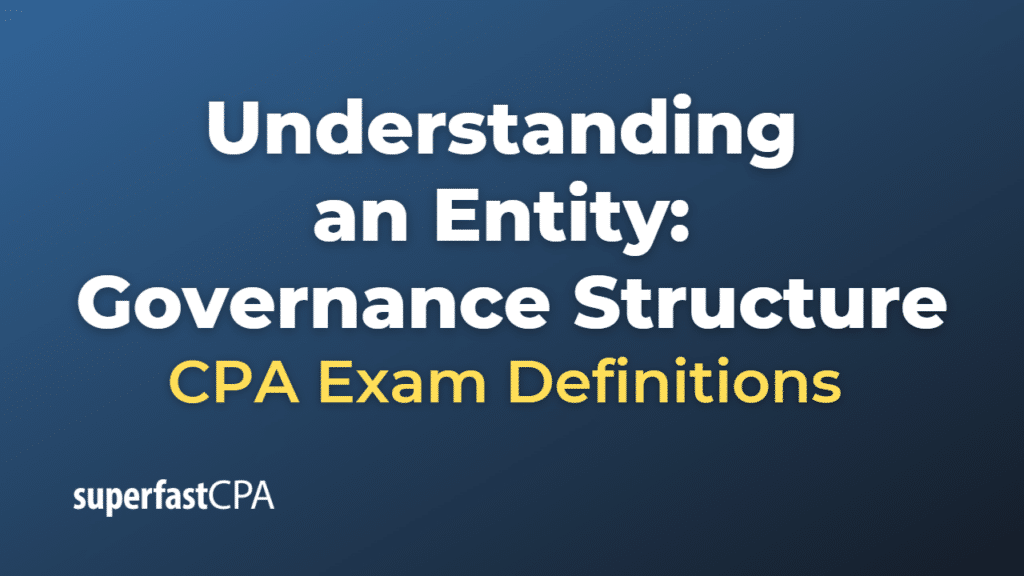Understanding an Entity: Governance Structure
An entity’s governance structure defines the nature of the entity by outlining the roles, responsibilities, and relationships among its board of directors, management, and other stakeholders. Governance structure helps determine how an entity makes decisions, manages risks, and oversees its operations, financial reporting, and internal controls. The governance structure can impact the risk of material misstatement in an entity’s financial statements in several ways:
- Board of directors and oversight: A strong and independent board of directors can provide effective oversight, challenge management decisions, and promote a culture of integrity and accountability. This can help reduce the risk of material misstatement by enhancing the entity’s internal control environment and financial reporting quality. Conversely, weak or ineffective boards can increase the risk of material misstatement due to a lack of oversight or accountability.
- Audit committee: An active and knowledgeable audit committee can contribute to the quality of financial reporting by overseeing the financial reporting process, engaging with external auditors, and monitoring internal controls. A strong audit committee can help reduce the risk of material misstatement by identifying and addressing potential issues or weaknesses. On the other hand, a weak or inexperienced audit committee may not effectively address financial reporting risks, increasing the risk of material misstatement.
- Management’s philosophy and operating style: Management’s philosophy and operating style can shape the entity’s control environment, risk management, and financial reporting practices. A management team that prioritizes transparency, accountability, and ethical behavior can contribute to a lower risk of material misstatement. In contrast, a management team that prioritizes aggressive growth, short-term financial performance, or personal gain can increase the risk of material misstatement due to management bias, manipulation of financial results, or aggressive accounting practices.
- Internal control environment: The entity’s governance structure can impact the effectiveness of its internal control environment, including the design, implementation, and monitoring of controls over financial reporting. A robust governance structure that supports a strong internal control environment can help reduce the risk of material misstatement. In contrast, weak governance may lead to ineffective controls, increasing the risk of errors, fraud, or material misstatement.
- Communication and information flow: Effective communication and information flow within an entity’s governance structure can promote transparency, accountability, and informed decision-making. Poor communication, on the other hand, can lead to a lack of understanding, misaligned objectives, or incomplete or inaccurate financial reporting, increasing the risk of material misstatement.
When assessing the inherent risk of material misstatement during the planning and execution of an audit, auditors should consider the impact of an entity’s governance structure on its operations and financial reporting. Understanding the implications of the governance structure can help auditors design appropriate audit procedures to address the risks associated with the entity’s governance and provide reasonable assurance that the financial statements are free from material misstatement.













